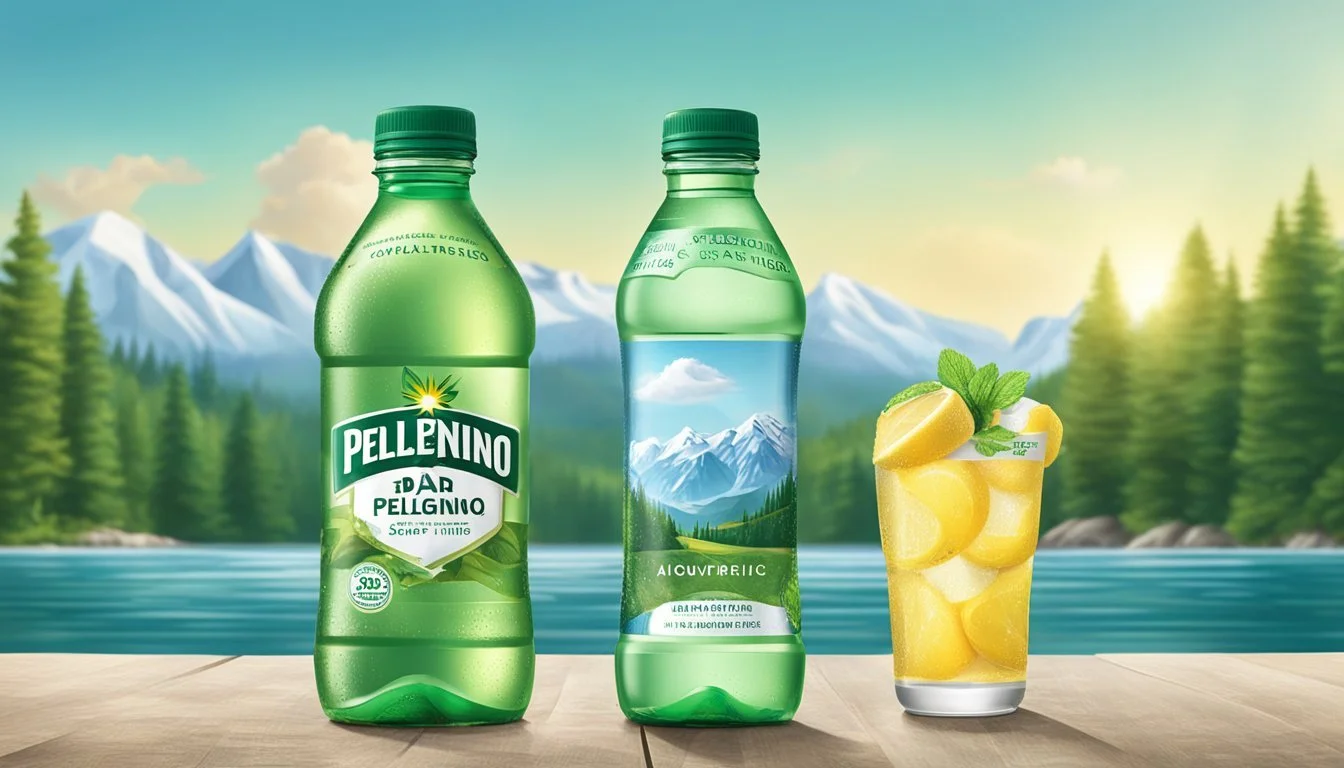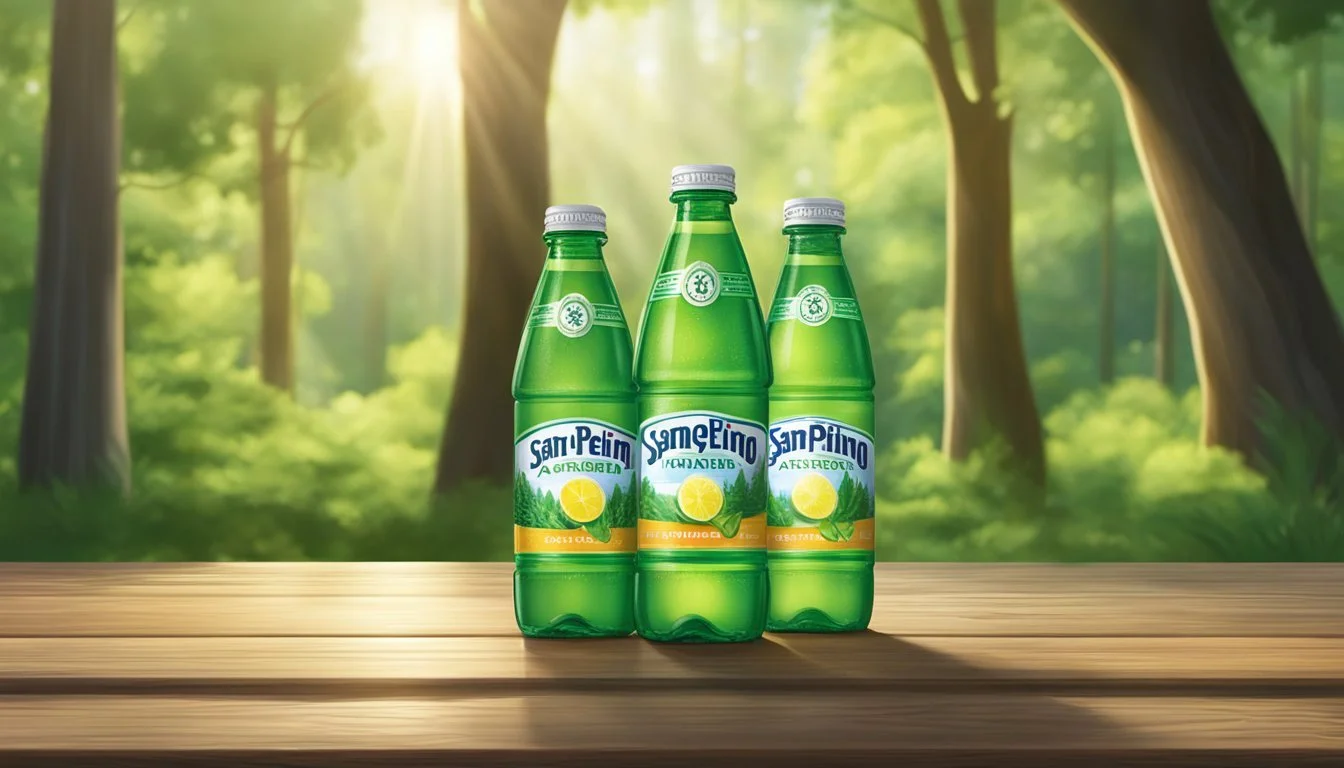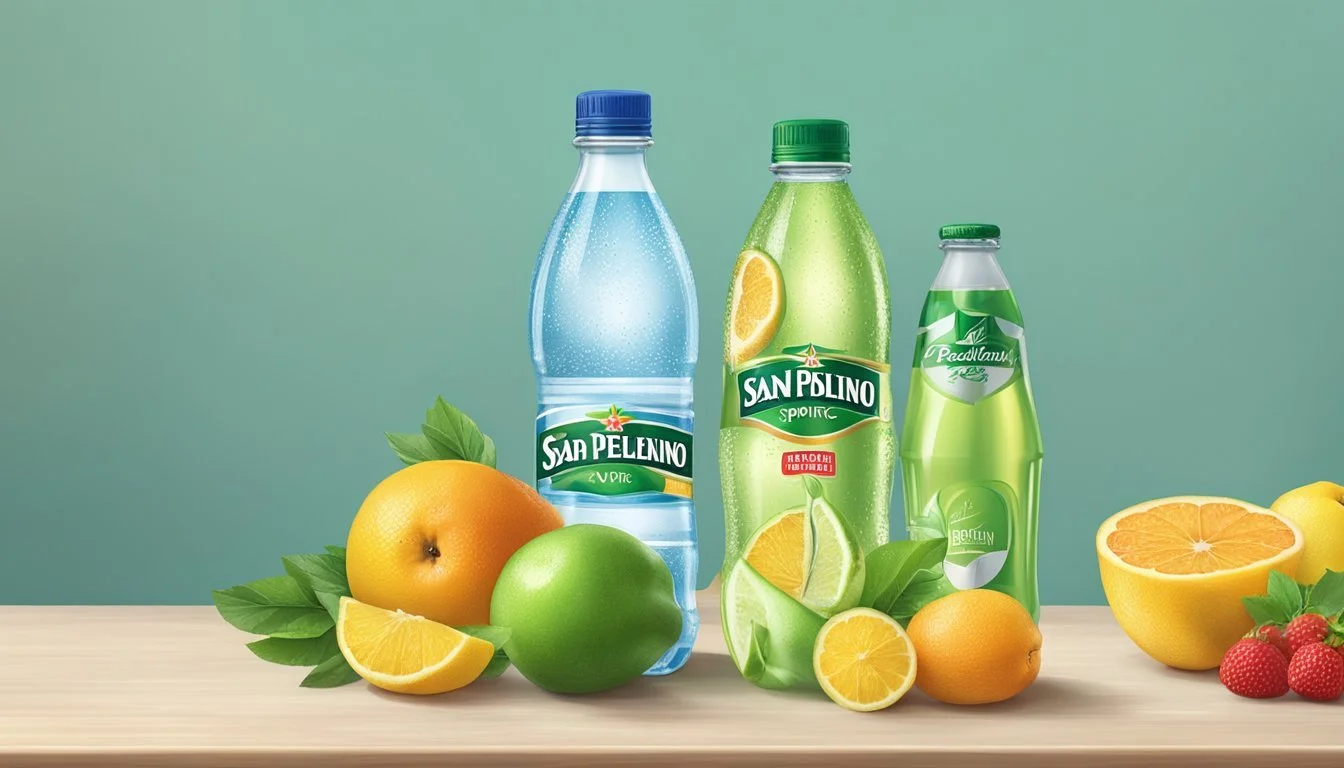Poland Spring vs. San Pellegrino
Comparing Quality and Taste
When it comes to selecting a bottled water, consumers are faced with a plethora of choices, each boasting purity, taste, and a unique mineral content. Two prominent players in the water industry are Poland Spring and San Pellegrino. Poland Spring originates from multiple sources in the state of Maine and is known for its still spring water, while San Pellegrino is an Italian brand distinguished by its naturally carbonated mineral water sourced from San Pellegrino Terme.
The choice between Poland Spring and San Pellegrino often boils down to individual preference for still or sparkling water and the resultant mouthfeel and taste. Poland Spring water is filtered naturally through glacial sands and boasts a clean, crisp taste that fits everyday consumption. San Pellegrino, in contrast, has a distinct fizz and a slight mineral flavor due to its unique blend of minerals, such as calcium, magnesium, and bicarbonate, that it gains during a 30-year journey through the underground rocks of the Italian Alps.
Both brands have their merits and their dedicated customer bases, but they serve different needs and occasions. Poland Spring may be favored for the convenience of daily hydration, while San Pellegrino might be chosen for its sophisticated effervescence, often found gracing dining tables. Each has carved out its own niche in the market, with factors such as source, taste, mineral content, and carbonation level playing key roles in a consumer's decision-making process.
Bottled Water Brands Overview
The bottled water industry is home to a diverse range of brands, each with its own unique sources and qualities. Poland Spring and San Pellegrino are two well-known brands, with the former originating from Maine's springs and the latter being an Italian brand noted for its mineral water.
Nestlé owns Poland Spring and several other water brands, including Perrier, which is known for its carbonated mineral water. In contrast, San Pellegrino, also carbonated and owned by Nestlé, is internationally recognized for its fine bubbles and high mineral content.
Here are some prominent names in the bottled water market:
Evian: Sourced from the French Alps, known for natural filtration.
Fiji: It is sourced from an aquifer in Fiji and is famous for its soft mouthfeel.
Aquafina and Dasani: Owned by PepsiCo and Coca-Cola respectively, are purified waters widely available.
Voss: Positioned as a premium brand, comes from Norway.
Smartwater: Vapor-distilled by The Coca-Cola Company.
Mountain Valley Spring Water: Hailing from Arkansas, this brand offers spring water with a unique mineral composition.
Smaller, eco-conscious brands have also garnered attention, such as Icelandic Glacial and Boxed Water, offering sustainable alternatives. Meanwhile, Nestle Pure Life and Ethos Water, another product of The Coca-Cola Company, contribute to social causes with each purchase. The beverage giants PepsiCo and Coca-Cola have expanded their portfolios to include sports and energy hydration options, like Gatorade and Life WTR.
Innovation continues to thrive within this industry, with companies like Hydro-7 and Core Hydration, which focus on optimizing pH levels for better hydration. Also, the trend towards naturally flavored sparkling water is evident with brands like La Croix and Topo Chico. With consumer demands evolving towards health and environmental awareness, bottled water brands continue to adapt and diversify their offerings.
Quality and Purity Standards
When considering bottled water brands like Poland Spring and San Pellegrino, it is essential to understand how they comply with regulations, their filtration methods, mineral content, taste, and overall safety.
EPA Regulations and Compliance
Bottled water in the United States, such as Poland Spring, is subject to the Environmental Protection Agency (EPA) standards, which set limits on contaminants like lead and chlorine. Additionally, the Food and Drug Administration (FDA) regulates bottled water as a food product, ensuring it meets similar safety standards. San Pellegrino, originating from Italy, complies with the European Food Safety Authority as well as the FDA for its distribution in the U.S.
Contaminants and Filtration Processes
Both brands employ various filtration methods, including reverse osmosis and microfiltration to remove impurities and contaminants. Poland Spring emphasizes its 10-step quality process, while San Pellegrino utilizes natural filtration as the water emerges from alpine springs, followed by ozone and ultraviolet light treatment for disinfection.
Poland Spring's Filtration Process:
Reverse osmosis
Microfiltration
Ozone disinfection
San Pellegrino's Filtration Process:
Natural alpine filtration
Ozone disinfection
Ultraviolet light treatment
Comparison of Mineral Contents
The mineral contents of Poland Spring and San Pellegrino differ significantly. San Pellegrino is known for its rich mineral content, providing calcium, magnesium, and bicarbonate. In contrast, Poland Spring contains lower levels of minerals, which makes it softer on the palate.
Poland Spring Minerals:
Calcium: Low
Magnesium: Low
Potassium: Low
San Pellegrino Minerals:
Calcium: High
Magnesium: Moderate
Bicarbonate: High
Taste Profiling by Sommeliers
Sommeliers often evaluate bottled waters based on their mineral content, which affects taste. San Pellegrino may have a complex taste profile characterized by its effervescence and minerality, which pairs well with food. Poland Spring offers a "cleaner" taste due to its lower mineral content, potentially making it more refreshing when consumed alone.
Bottled Water Safety
Safety is paramount when choosing bottled water. Both Poland Spring and San Pellegrino undertake rigorous safety checks to ensure the absence of heavy metals, harmful bacteria, and other contaminants. Periodic testing and quality assurance practices are in place to maintain consistent purity standards and consumer trust.
Sources and Natural Reserves
In the comparison between Poland Spring and San Pellegrino bottled waters, it is crucial to understand their different sources and natural reserves, as the origin of water directly influences its quality and purity.
Natural Spring vs. Mountain Spring Water
Poland Spring's water is sourced from multiple springs in Maine, an area known for its abundant groundwater resources. The Poland Spring itself, alongside others like the Garden Spring and Evergreen Spring, contributes to the brand's supply. In contrast, San Pellegrino sources its water from a natural spring at San Pellegrino Terme, in the Italian Alps—a region renowned for its pristine mountain spring water.
Underground Springs and Aquifers
Both brands rely on underground springs and aquifers for their water. Maine's geological structure consists of glacial sands that naturally filter the water for Poland Spring, while San Pellegrino's aquifer, situated within the Italian Alps, is filtered through limestone and volcanic rocks, enriching the water with minerals and giving it a distinctive taste.
Regional Sources and Geological Features
Poland Spring:
Regions: Maine
Features: Glacial sands, pine tree surroundings, clean and pure environment.
San Pellegrino:
Regions: Bergamo, Italian Alps
Features: Limestone, volcanic rock, complex mineral composition.
Sourcing Transparency and Eco-Impact
Nestlé owns Poland Spring, and the company provides information about their sourcing, emphasizing the natural quality of their water. The environmental impacts are a subject of concern and discussion, prompting efforts to minimize ecological footprints. San Pellegrino, also owned by Nestlé, showcases its Italian heritage and its commitment to preserve the quality and purity of its source, amidst the global calls for sustainable water management.
The Role of Water in Hydration and Health
Water is the cornerstone of hydration and integral to health. The human body is composed of approximately 60% water, and it serves as a critical component in cellular function, temperature regulation, and waste removal. Effective hydration is achieved when the body has sufficient water to perform these functions optimally.
Mineral Water: This type of water naturally contains minerals like calcium, magnesium, and potassium—essential electrolytes the body uses to maintain nerve and muscle function, as well as to balance pH levels. Poland Spring and San Pellegrino are examples of bottled mineral water, each offering a different blend of electrolytes due to their unique sources.
Electrolytes play a pivotal role in hydration. They are minerals with an electric charge, crucial for:
Maintaining fluid balance
Transporting nutrients
Supporting healthy muscle contractions
Regulating the body's pH levels
Alkaline Water: With a pH above 7, alkaline water has gained attention for its potential health benefits. Advocates suggest that it can help neutralize acid in the bloodstream, which may lead to better hydration and health improvements. However, scientific consensus on these claims is not yet firm.
Hydration is not just about the volume of water ingested, but also the quality and content. Mineral and alkaline waters, such as San Pellegrino and certain bottled waters marketed as 'alkaline', may offer additional benefits due to their content. Nonetheless, it's crucial to consider that staying hydrated predominantly requires adequate water intake, regardless of the type.
In summary, while the mineral content and pH level of water can contribute to its hydration potential, the most important factor for health is to ensure consistent, adequate water consumption.
Flavor and Carbonation
When comparing Poland Spring and San Pellegrino, it's essential to distinguish between their offerings of still and sparkling water, as well as examine any flavor additives or enhancements they may utilize.
Sparkling vs. Still Water Comparison
Sparkling water, like San Pellegrino, is infused with carbon dioxide gas under pressure, introducing the characteristic bubbles and fizz. This carbonation process can subtly change the taste, often making the water seem more acidic due to carbonic acid formation. Mineral water, specifically, may contain various minerals like bicarbonate, chloride, and sulfates, which can influence both the taste and mouthfeel of the water.
On the other hand, Poland Spring, primarily known for its still water, offers a different taste experience. Without carbonation, the underlying flavors of the water, which can be a blend of different spring sources, are more noticeable. Still water does not have the sharpness or tang that comes with carbonation and is often described as smoother.
Additives and Flavor Enhancements
Poland Spring:
Offers both unflavored and flavored options.
Flavored varieties may include natural additives to enhance taste.
San Pellegrino:
Recognized for its natural mineral content; this includes substances like calcium, magnesium, and bicarbonate.
Offers a line of flavored sparkling waters enhanced with natural flavors from fruits.
Both brands maintain a reputation for quality, but the choice between them can hinge on personal preference for mineral content and the presence of bubbles. Flavor enhancements in sparkling water should not be overbearing; they're meant to complement the carbonation rather than overshadow the natural water taste.
Packaging and Environmental Factors
When considering the environmental impact of bottled water, the packaging is a substantial factor. Poland Spring offers its water in various types of plastic bottles, which, according to some sources, may contain microplastics. However, the extent of these claims and their implications for health or environment are part of ongoing discussions and research.
On the other hand, San Pellegrino bottles their water in glass and plastic bottles. Glass offers an eco-friendlier alternative due to its recyclability and the reduced likelihood of leaching chemicals. The company's choice to offer water in glass bottles is a nod toward sustainability, as glass can be recycled indefinitely.
In a broader context, the industry sees innovations like boxed water, which is gaining attention for its lower carbon footprint when compared to plastic bottles. While neither Poland Spring nor San Pellegrino offers boxed water, this packaging alternative represents an eco-friendly trend in the market.
Companies are increasingly conscious of their environmental impact, with many adopting more sustainable practices. Choosing bottles made from recycled materials or investing in recycling programs can help reduce the ecological footprint of bottled water products.
Consumers concerned with eco-friendly options may gravitate towards products with better recycling profiles or innovative packaging solutions that minimize environmental harm. The choice between Poland Spring and San Pellegrino might come down to factors like packaging materials, recyclability, and the brand's commitment to environmental stewardship.
Market Trends and Consumer Preferences
The bottled water market is experiencing steady growth, with an estimated compound annual growth rate (CAGR) of 5.9% from 2023 to 2030. This growth is influenced by a heightened consumer focus on health, leading to a preference for bottled water over tap water due to concerns about contaminants.
Consumers demonstrate particular preferences when it comes to bottled water. Poland Spring, sourced from Maine, attracts consumers seeking economical choices with a regional focus. Its reputation is built on providing a reliable product that is accessible and widely trusted.
In contrast, San Pellegrino, an Italian brand known for its mineral content and carbonation, is often perceived as a premium product. A segment of bottled water consumers prefer San Pellegrino for its distinctive taste and its status as a luxury brand.
Aspect Poland Spring San Pellegrino Source Multiple springs in Maine Natural spring, Italian Alps Consumer Image Economical, regional, reliable Premium, upscale, distinctive Carbonation Non-carbonated Carbonated Market Position Widely distributed, mass-market appeal Niche market with focus on fine dining
The market trends towards environmental consciousness also play a role. Consumers are increasingly aware of the impact of plastic bottles, which may affect preferences and demand more sustainable packaging solutions. Brands like Poland Spring and San Pellegrino are subject to these trends, influencing how they adapt their products and practices to maintain customer loyalty.
Price Comparison and Value Assessment
When evaluating bottled water options, price and value are frequently significant factors for consumers. Poland Spring and San Pellegrino cater to different market segments, which is reflected in their pricing structures.
Poland Spring is often marketed as a daily drinking water. It is extracted from multiple sources in Maine, and is a still water product. In contrast, San Pellegrino is a sparkling mineral water sourced from San Pellegrino Terme in Italy. The carbonation and mineral content are natural.
A comparison of the prices for standard bottles is as follows:
Size Poland Spring (Still Water) San Pellegrino (Sparkling Mineral Water) 500ml $1.00 - $1.50 $1.50 - $2.50 1 liter $1.50 - $2.00 $2.00 - $3.50
It should be noted that prices vary by retailer and region, and bulk purchasing often reduces the cost per unit.
In terms of value, consumers should consider their personal preferences for taste, the presence of minerals, and whether they prefer still or sparkling water. Poland Spring provides a more economical choice for consumers seeking a straightforward, still water. Meanwhile, San Pellegrino is typically viewed as a premium option, often associated with dining experiences and favored for its unique taste and effervescence.
Consumers looking for daily hydration may find Poland Spring to offer better value, while those who enjoy water with a more distinctive character and effervescence, and are willing to pay a premium, may opt for San Pellegrino.
Closing Thoughts
When assessing Poland Spring and San Pellegrino, consumers have distinct choices for hydration.
Poland Spring:
Offers a mild taste ideal for everyday drinking.
Sourced from various springs in Maine, indicating a potential variety in taste and mineral content.
Lacks the pronounced minerals of San Pellegrino, catering to those who prefer a softer palate.
San Pellegrino:
Renowned for its rich mineralization and signature bubbles.
An Italian brand associated with dining experiences and a gourmet appeal.
Contains higher sodium levels, which might be a consideration for individuals with specific health concerns.
One's preference for Poland Spring or San Pellegrino may be influenced by the context in which the water is consumed. Poland Spring could be seen as a go-to for straightforward hydration, while San Pellegrino might be chosen to complement a meal or serve as a sophisticated refreshment option.
Price, availability, and personal health must also factor into the choice between these two brands. Poland Spring is typically more accessible and budget-friendly, while San Pellegrino is often viewed as a premium product.
The market offers a broad spectrum of bottled water options, ranging from local to international sources. Each brand comes with its own story, mineral profile, and consumer base. It is these characteristics that shape individual preferences and determine which bottled water someone might consider 'better'.







